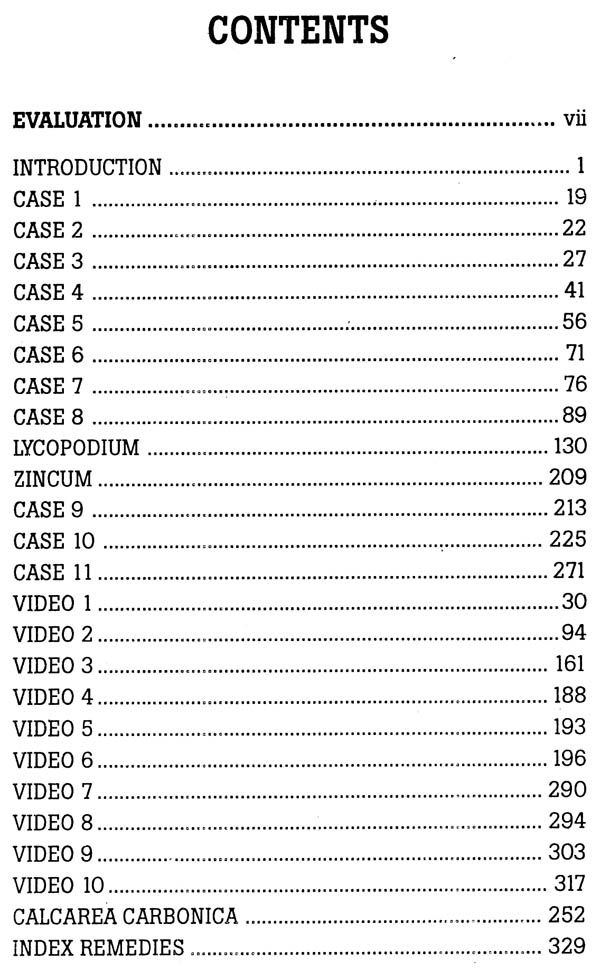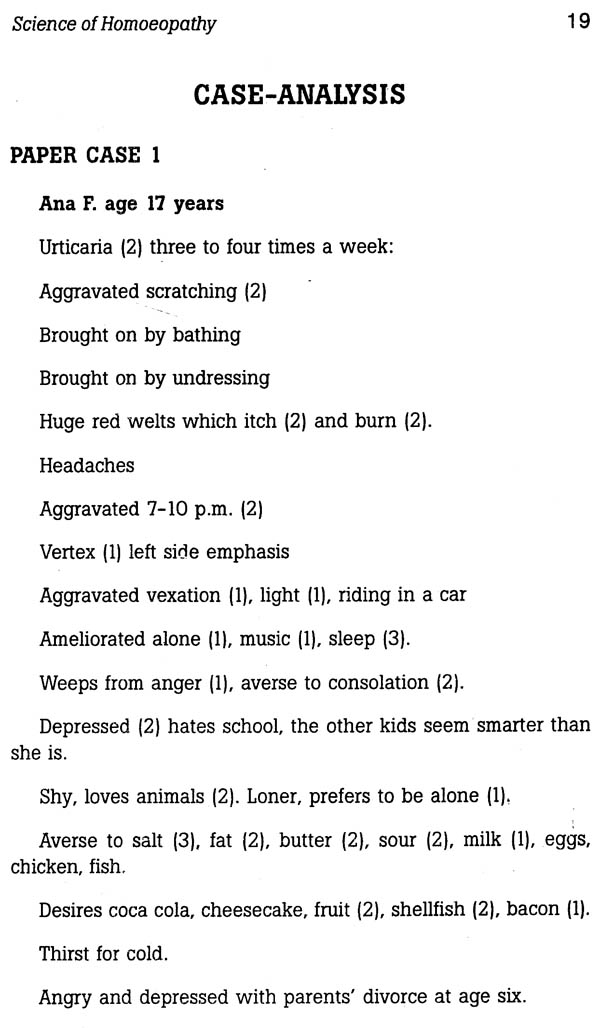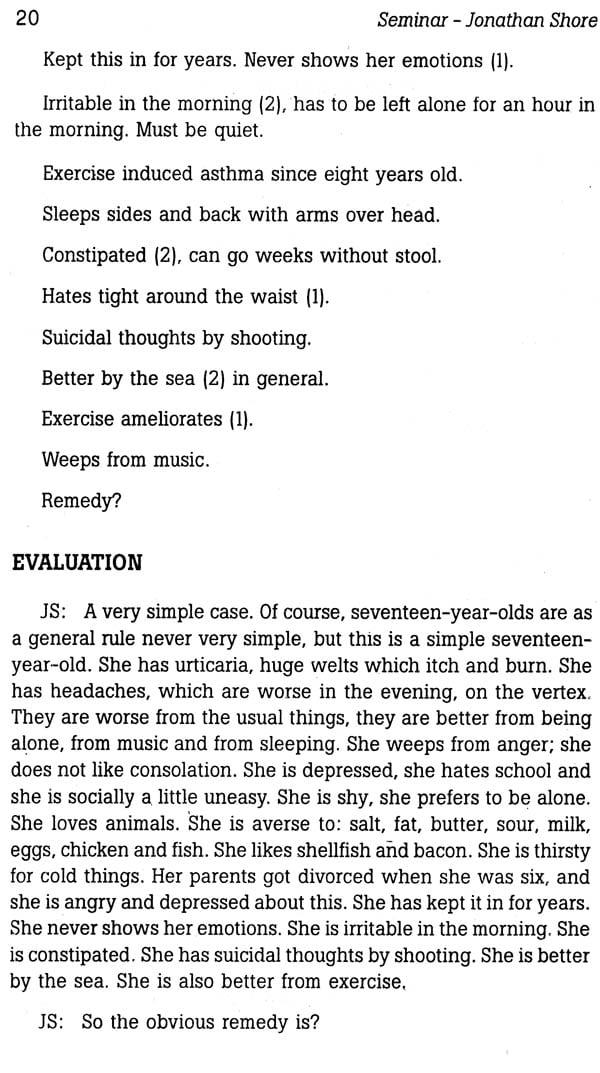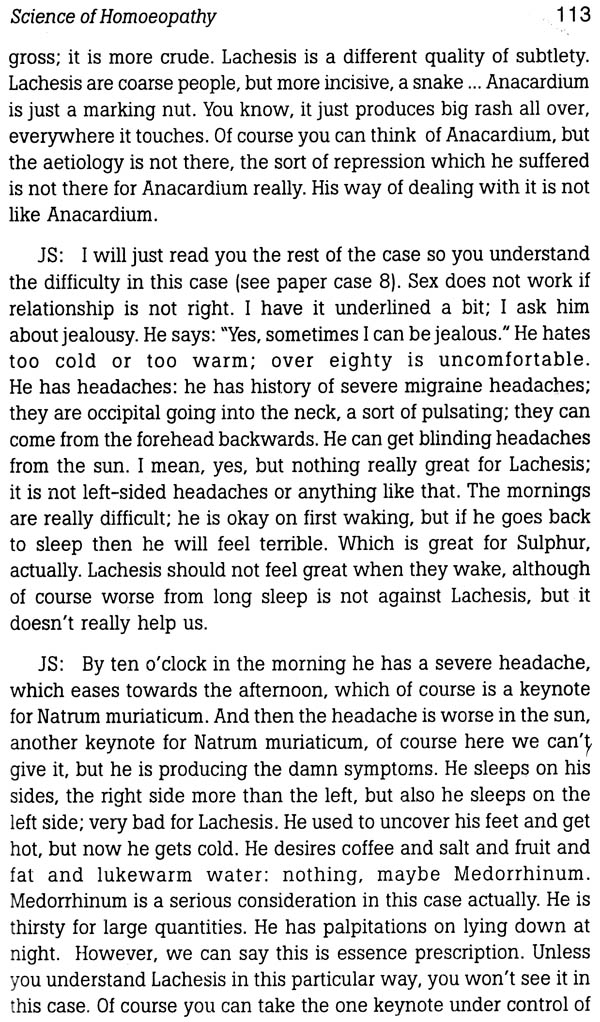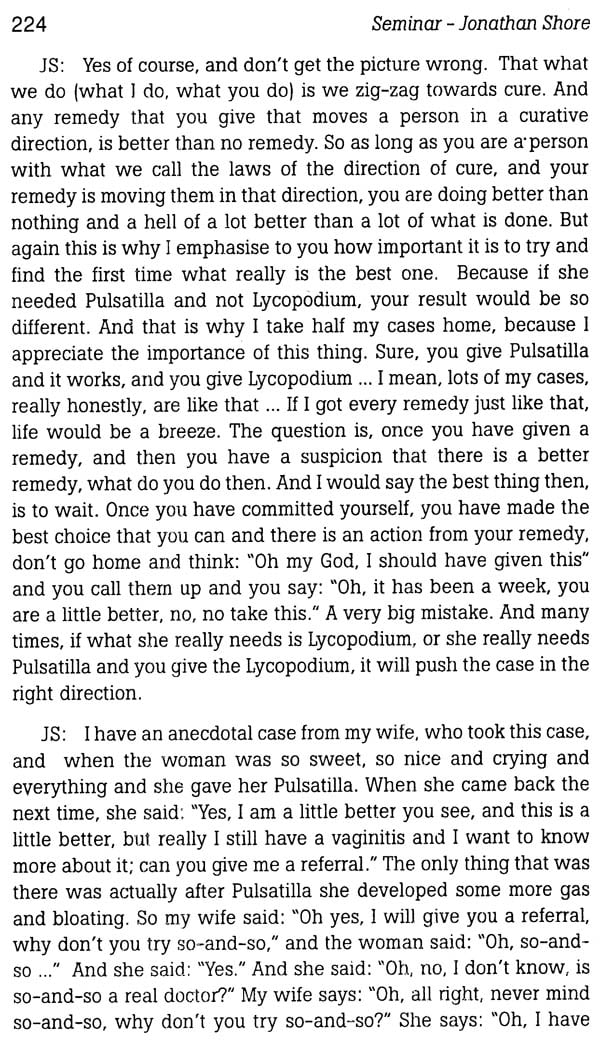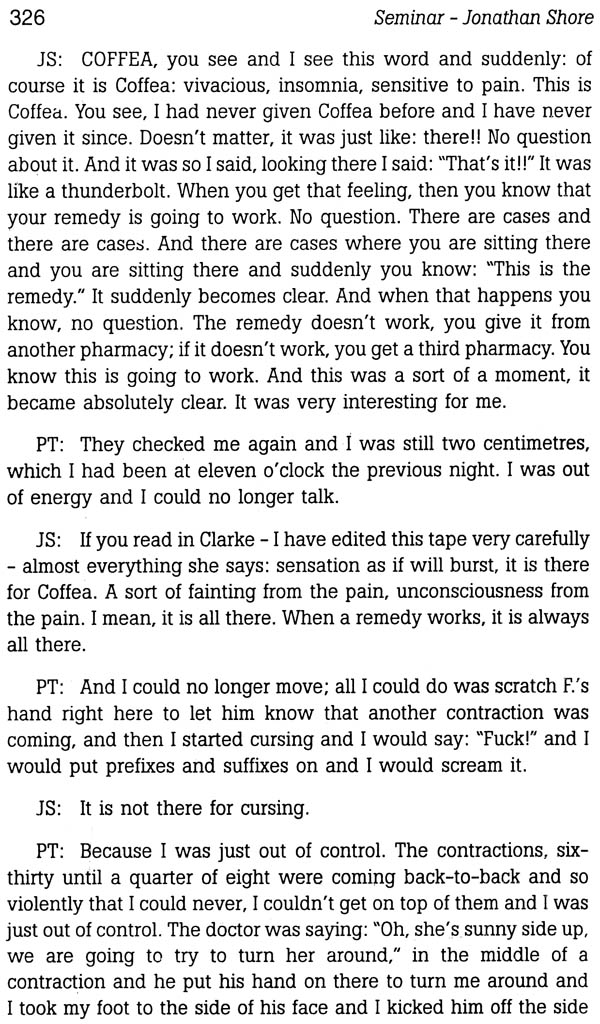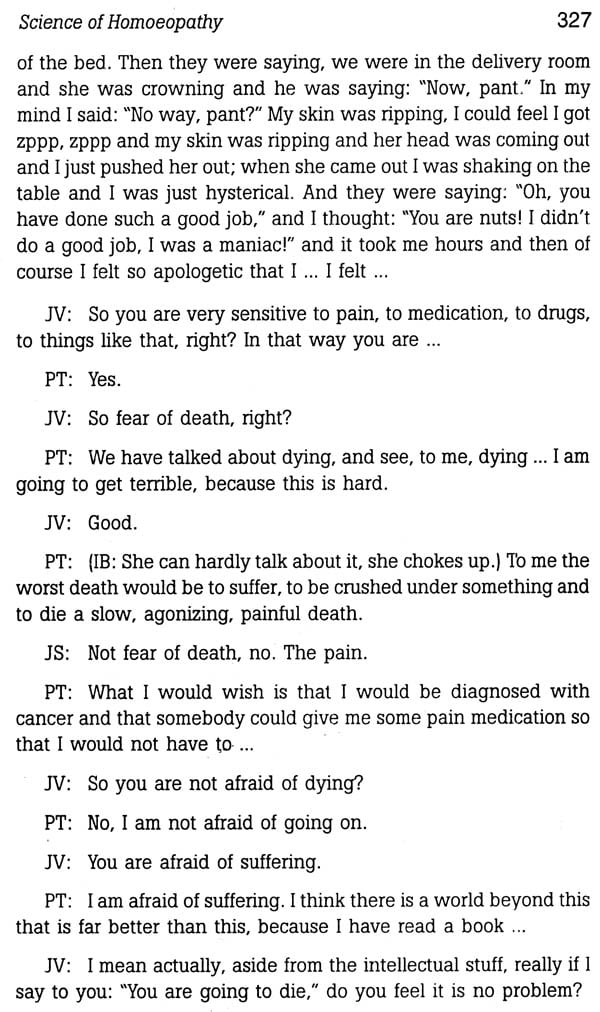
The Art of Prescription ( Second Prescription , Follow up , Posology)
Book Specification
| Item Code: | NAU210 |
| Author: | Jonathan Shore |
| Publisher: | B. Jain Publishers (P) Ltd |
| Language: | ENGLISH |
| Edition: | 2016 |
| ISBN: | 9788131903674 |
| Pages: | 329 |
| Cover: | PAPERBACK |
| Other Details | 8.50 X 5.50 inch |
| Weight | 340 gm |
Book Description
This particular book is a collection of seminars of Dr Jonathan Shore given in Glasgow in 1990 where he has discussed 10 cases with all the details of questions and the patient-physician conversation. Through these cases he has highlighted the points which lead to prescription of a particular remedy and how to evaluate its efficacy and accuracy when the patient comes back, and talks about second prescription which is a very important aspect of homeopathic practice. He has discussed all the possible aspects of second prescription which can be possible in a homeopathic practice and how to see whatit is and the next step to it.
Jonathan Shore M.D., DHt, MF Hom was born on August 6, 1943, in Cape Town, South Africa. He graduated from the University of Cape Town Medical School in 1968. He has intensive knowledge of Acupuncture, Tai-Chi Chuan, Massage, Jungian psychology Gestalt therapy, Bioenergetics, Rolfing, Radiesthesia, Iridology, Herbal Medicine, Bach Flower remedies, and Colour therapy. Since 1982, he has been a full time homeopathic practitioner in the San Francisco area. Dr Shore has a private practice and works at the Hahnemann Clinic, of which he was one of the initiating founders. Dr Shore has-taught worldwide since 1983. In 4992, he was awarded membership of The Faculty of Homeopathy, England. He is on the editorial board and is a past editor of the Journal of the American Institute of Homeopathy.
Key Features:
DR: This is a part two seminar after a year’s break. We will continue where we left off. Some of the audience have met Jonathan from California, who has been involved in homoeopathy for fifteen years. met him in America and was very impressed by his balanced view of homoeopathy. Although he belongs to the classical school of prescription, he is quite prepared to involve himself in discussion and debate and other ideas. His flexibility extends to his style of care and his style of teaching. think probably almost all of you have had one of the previews of the videos from last year, just how impressive they were.
JS: What Iam going to try and do, is somewhat less dramatic and somewhat more instructive. We are going to try and deal with the evaluation of the action of the remedy and the second prescription (see evaluation, page 288 - 291). So mostly this will be paper cases and not so much an exercise to find the remedy, but to see what has happened after we have given the remedy. Because anyone who has been in practice for a little while realises that finding the remedy is the easiest part. It is once you have found the remedy that your troubles really begin. I will go through and I will give you an idea of how I perceive the various categories of events. Then we will go through the cases one by one and try and see which case illustrates which category of events.
The first prescription is of course the first remedy which acts, not the first remedy which you give. You can give ten remedies and not have a first prescription. Of course after your remedy has acted, a decision needs to be made at some point as to whether you need a different remedy and how you will choose what this different remedy might be. So just in passing, I want to make some remarks about the evaluation of acute prescriptions, because these cases you will see here, are chronic cases.
The rhythm of intervention needs to correspond to the rhythm of the disease. In other words: in an acute case you Call make a decision after forty-six hours in many cases, and change the remedy if there is no action. So if you have someone who has an acute bronchitis, pneumonia, a child with pneumonia, a child with severe otitis, cholecystitis, you don’t give them the remedy and say: "Call me in two or three days." You expect your remedy to show some action pretty quickly. And you have to evaluate that according to the time of day and the anxiety of the patient. Usually I would say that in acutes which are not really severe, I let them take the remedy every four hours over a twenty-four hour period of time, and I tell them to call me the next.day. Because if you tell them that if the remedy has not worked after four hours, they have to call you, they will call you, and they will say: "It hasn't worked!" Unless of course, it is a really clear and dramatic prescription, but most of the time (at least at my level of prescribing) in acute cases, I am satisfied if my remedy turns the case around. A really, really precise prescription in an acute case will work within ten minutes and within an hour or so the person will feel almost completely better. That is a rarity in my personal experience, simply because it is not always easy to find the exact similimum in acute cases, and it is sufficient for me if after they start taking the remedy, instead of declining they begin to turn around and get better. But if they are really sick, the kid is screaming with the Otitis, or the person is writhing around with a renal colic or ' something like that, the remedy has to work very quickly. I mean, in the office, you should see some action.
In chronic disease the situation is of course quite different. The optimum time for evaluation is after a month, and this is by experience. Actually in many cases it could even be longer than a month, but some balance has to be struck between the expectation of the patient and what we consider to be optimal. So a month is good enough, unless of course the person has quite severe asthma or they are on the verge of blowing their peptic ulcer. Then it is needless to say that the way in which you follow the case has to correspond a little more closely to the severity of the condition. But evaluation after one month is really the best time, and often you will see that it is only in the fourth week that people will actually recognise that they are feeling better. Not all the time, but in a certain significant percentage of cases, it takes a little while before it percolates through to them. If you see them sooner, they will catch you in their trap, in their anxiety and you will prescribe another remedy too soon.
This has happened to me. I remember a case from many years ago, where I gave this woman, Natrum muriaticum. I was supposed to see her after two or three weeks, but something happened and I only managed to see her after a month. She came and she told me that after the remedy, starting right away she had a headache, every day for three weeks, and on the twenty-first day the headache disappeared and she felt better than she had in a very long time. Now I know at that level of my experience, if I had seen this woman at nineteen days, I would have changed the remedy, because I would have thought: "Oh my God, I have done something wrong; now she has this bad headache, I messed things up." So be aware of this. Give your remedy time.
